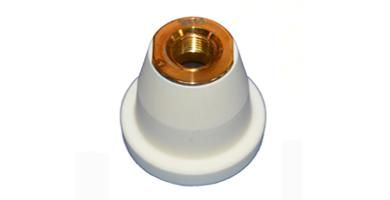The craze for laser engraving, marking and etching is increasing day-by-day because of the regulations set by the government regarding product identification.
All of them provide permanent marking solutions that can add that distinct mark on your products.
But, there are only a few people who understand the difference between them. While these three techniques look similar, their applications set them apart.

The major difference between laser marking, engraving and etching lies in what they could do to the marking surfaces. The difference also lies in how deep the laser goes and the way it changes its overall appearance.
Laser marking damages the surface of the material, whereas laser etching and engraving removes the portion of the area it marks.
The other difference between laser engraving and etching is the depth at which it enters the surface.
Without any further ado, let’s explore more differences between them.
1. Laser Marking Process
Laser marking is the process when beam comes in contact with the surface of any material and alters its properties or appearances. You should use laser machines having parts like Mazak parts, Fanuc spare parts, and Fanuc CNC parts for best laser marking results.
Here we have mentioned steps for laser marking which will give you some insights on how it works.
- It uses a method called distortion by moving a low powered beam across the material.
- This creates high contrast marks without damaging the material.
- Laser heats the material and causes the oxidation under the surface turning the material black.
- It uses low temperature to solidify the surface.
- The major advantage is that all these steps do not damage the surface.
Now, let's look at some of the characteristics which make it different from the other two:
- Laser marking is not a common thing and there are only a few that provide these services.
- It is known as laser coloration, laser dark marking or charring when it works with plastic materials or annealing metals.
There are four types of laser marking:
- Annealing
- Carbon migration
- Foaming
- Coloration
Laser marking is popular in the medical device industry for marking stainless steel and titanium parts, but you can use it on other materials as well.
A laser market is perfect for bar codes, UID codes, QR codes, logos, etc.
2. Laser Engraving Process:
In laser engraving, the laser beam physically removes the surface of the material and exposes a portion of the image at the eye level.
Let’s look at laser engraving steps:
- Laser releases excessive heat during the engraving process which results in vaporization of the material.
- It is a quick process that vaporizes materials at each pulse.
- This makes the surface vulnerable and noticeable to eyes and you can touch it too.
- If you want deeper marks on the material then make sure that you repeat the process several times.
- Below mentioned are features of laser engraving which will help you know the difference between them and the other too:
There are three types of laser engraving:
- Etching
- Deep laser engraving
- Laser ablation
The major difference between the above three engraving types is the surface you are engraving and how much you remove.
- Maximum engraving depth for metal is 0.020” but it can even go as deep as 0.125” in materials like graphite.
- Mostly, people use engraving when they want to create personalized items.
- It is not suitable to mark the critical parts.
- It is the fastest way to create a mark with a laser.
- It’s suitable for parts expected to experience high wear and tear.
- You can use it to engrave serial numbers and logos, among other things.
- You can engrave on almost any kind of surfaces like metal, plastic, wood, leather, and glass.
3. Laser Etching Process:
It is a subset of laser engraving. It occurs when the heat from the beam melts the surface of the material. For best results, invest in parts like Mazak parts and Fanuc CNC parts.
Below mentioned are some of its characteristics:
- It uses excessive heat to melt the surface of the material.
- It expands material to create a raising mark.
- The depth here is 0.001”.
The major difference between laser etching and the other two are:
- Laser etching changes the reflectivity and increases the contrast of the metal and so it is preferable when you want to provide a better finish.
- It removes 0.001” or less from the material.
- Etching works on bare, plated metal surfaces, polymers or ceramics.
Wrapping it up:
I know there’s a lot of confusion about these terms among people which is common and people use it interchangeably very often, but there are wide differences between them and their applications. After selecting the process, make sure you are choosing a laser machine with the right laser parts like Mazak parts, Fanuc spare parts, etc.

 Log in with Facebook
Log in with Facebook 








